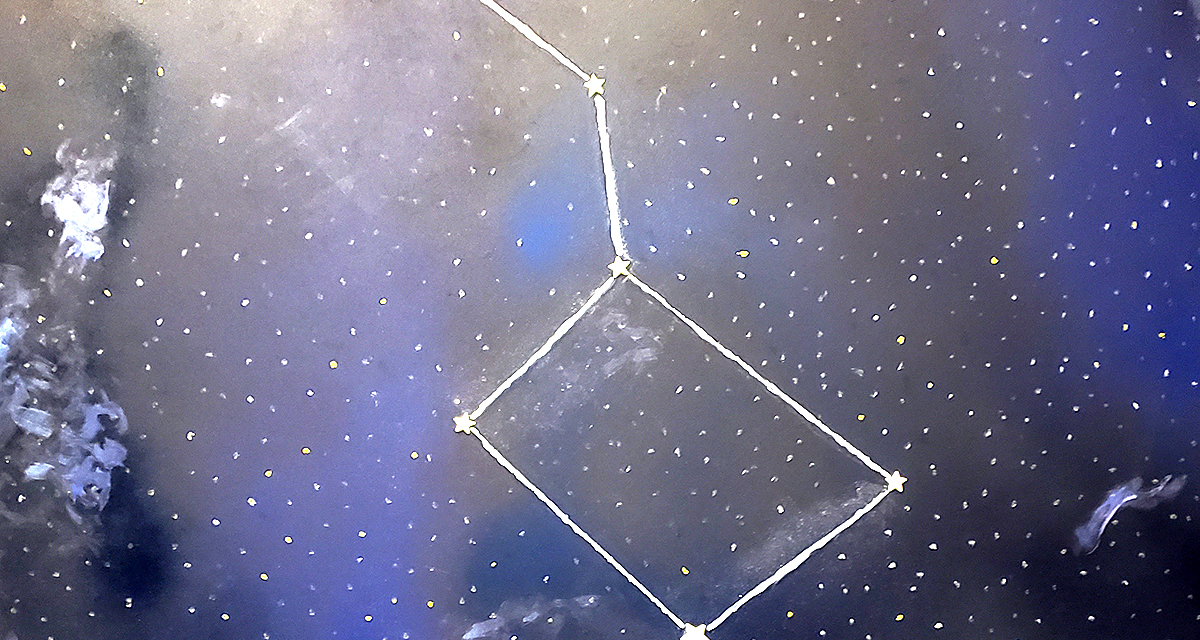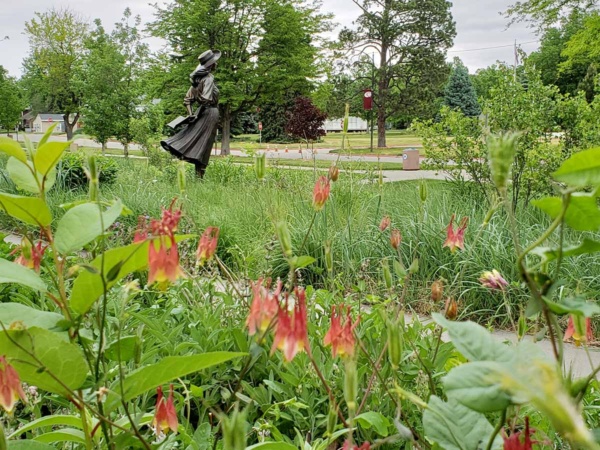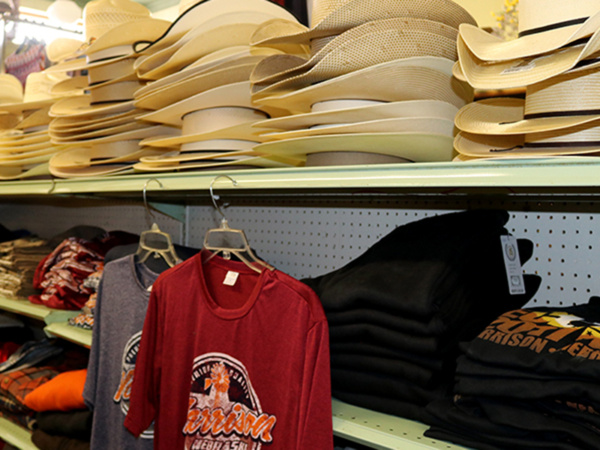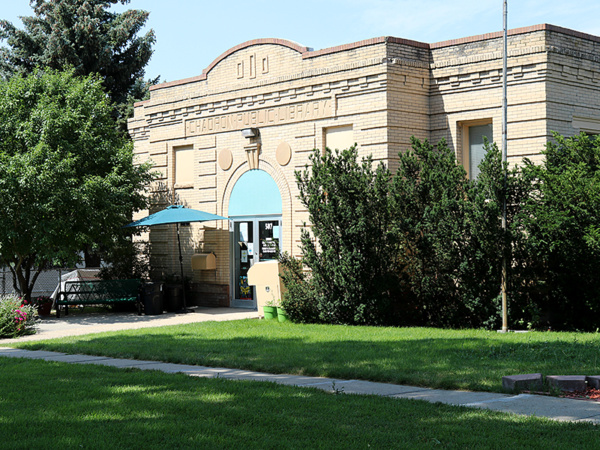By Kerri Rempp
Discover Northwest Nebraska
Pick almost any spot in Northwest Nebraska after sunset and you’re sure to be treated to spectacular night sky viewing. But long before the region was settled by Europeans, the night skies played an important role in the Lakota culture.
The newest show at the Mari Sandoz High Plains Heritage Center showcases the Lakota constellations and highlights how the view in the night skies was reflected on Earth in the Lakota’s movements and actions. “Kapemni: As It Is Above, It Is Below” explains Lakota astronomy and the belief that what is visible in the sky is mirrored on Earth.
“It’s the mirroring of geography and ceremony and tells the stories of creation,” said the Sandoz Center’s Holly Counts.
Counts was inspired to create the show, which runs through Oct. 15, when items from the Chadron State College Planetarium were relocated to the Sandoz Center last year. The planetarium’s home, the college’s math and science building, is currently undergoing renovation and is expected to re-open next year. Until that time, the planetarium sky ball and a few other items are on display at the Sandoz Center.

The week surrounding the Winter Solstice on December 21 has the longest nights of the year. During the week, the kapemni constellation pairs of the Black Hills appear at their zenith. It is a time to remember the traditions and stories of the stars and pass them on to the next generation. Photo by Kerri Rempp/Discover Northwest Nebraska

The Thunderbird constellation, or Wakinyan, pairs to Thunder Butte, 105 miles northeast of the Black Hills. The Lakota ceremonial season begins with the Return of the Thunder to the Beings, announced by the first spring thunderstorm. It is a celebration of life returning to the land. The constellation is visible year-round. Photo by Kerri Rempp/Discover Northwest Nebraska
Among the items that arrived at the center last year were copies of documents detailing research done at the Sinte Gleska University in Rosebud, South Dakota. That research resulted in a book, “Lakota Star Knowledge,” which details the Lakota perspective incorporating a relationship between the star world and the world on Earth. The Lakota use the practice of helical rising, observing the sun at dawn and determining which constellations are visible with the sun as it rises in the east. The result is a calendar that directs Lakota to certain locations within the Black Hills and the performance of specific religious ceremonies.
For example, the Dried Willow constellation – or Aries and Triangulum – appear during the vernal equinox and direct the Lakota to winter camp in Nebraska and South Dakota for the Pipe Ceremony, according to the research. That ceremony commences the cycle of the renewal of life, and prayers are offered to call back the plants, animals and birds while expressing hope for the sacred White Buffalo calf in the spring.
Likewise, when the sun is in Bear’s Lodge – Gemini – the Lakota see that reflected on Earth as Devil’s Tower, where they perform the sun dance.
“The sun dance is the culminating ceremony to complete the necessary work of renewing life on Earth. The Lakota are then synchronized with the Great Spirit and are firmly on the Red Road,” the documents read.
Fourteen Lakota constellations are explained in the Sandoz Center show, each recreated in paintings by Counts, Assistant Professor of Physical Sciences Dr. Tawny Tibbits and CSC graduate student Kinsley Mason. The accompanying information explaining each constellation is sourced from “Lakota Star Knowledge” by Ronald Goodman and the D(L)akota Star Map Constellation Guide by Annette S. Lee, Jim Rock and Charlene O’Rourke.

Chadron State College employee Dallas Magnusson views the Lakota cultural items that are part of the current Kapemni show at the Mari Sandoz High Plains Heritage Center. Photo by Tena Cook/Chadron State College
In addition to the paintings, the show features several Native American cultural items from the center’s collection, as well as items on loan from center staff and local resident Roxy Puchner. Items include beadwork and ledger art from Native American artist Joe Pulliam.
The Lakota Zodiac signs – or totems – are also on display and explained, and take-home placards are available so visitors can review their own totem based on their birthday. The totems describe the characteristics associated with being born under that sign – all ascribed to an animal: Otter, Bear, Snake, Wolf, etc. The direction, element and stone associated with each totem are also listed.
The new planetarium’s final design, which includes handicapped-accessibility, the latest model of sky ball and a variety of new programs, is also on display. The planetarium is expected to re-open in the renovated MS Center of Innovative Learning in 2022.
The Kapemni show is a great way to keep the connection to the planetarium front and center until it can re-open, Counts said. Across the hall from the show, in the Chicoine Atrium, the original sky ball is available for viewing as well. The Sandoz Center has already hosted a Star Party this summer in conjunction with the show, and a second one is planned for July 28 at Agate Fossil Beds National Monument. Co-sponsored by the college, Agate Fossil Beds and the Chadron Public Library, the show will offer viewing opportunities of the Delta Aquarids and Perseid meteor showers. Shared telescopes will be available, as will a limited number of take-home sky maps. The event, which is weather-dependent, will begin at dark and end at 11 p.m.
Back at the Sandoz Center, kids will also enjoy the Kapemni show, with the opportunity to play in a children’s-sized tipi and complete coloring pages that will be added to the show.
And because everyone is a kid at heart, adults and kids can create their own constellation on one wall of the show with Velcro stars.
The Mari Sandoz High Plains Heritage Center is open Monday through Friday this summer. However, the center will be open from noon – 4 p.m. Saturday, July 10, during Fur Trade Days, when the grand unveiling of the final installation of the Spirit of the Plains exhibit will take place. That exhibit features a cardboard and burlap re-creation of the sacred Lakota White Buffalo, and the rest of the scene will be revealed July 10.


Above: The D(Lakota) Star Map depicts the various constellations used by the tribes. The Kapemni show at the Mari Sandoz High Plains Heritage Center features 14 of them.
At left: The Kapemni show includes take-home totem cards, outlining the Lakota zodiac signs.





